Understanding Spinnerbaits and Vibration
Understanding Spinnerbaits and Vibration
I love spinnerbaits. They are one of my all-time favorite baits for catching big bass. Having over 35 years of experience using them and making them has taught me a lot about what works and what doesn’t. So, today I want to help you when it comes to understanding spinnerbaits and vibration.
Blades; Those Little Spinny Things

For the moment, let’s talk about blades, those little spinny things that flash and vibrate at the end of that wire frame.
The blades on the spinnerbait are the primary “attractant” that gets the attention of the fish. They spin, generating flash and vibration. Those two things (flash and vibration) work together to draw the fish and cause them to bite.
Thumpity Thump Thump
Now that we’ve established that blades use flash and vibration to attract fish, let’s focus solely on vibration for the remainder of this article. Why? Because vibration will work even when there is no flash present.
Vibration allows bass to home in on fish that they can’t necessarily see right away. This works based on the lateral line nerves, giving them razor-sharp tracking abilities that help them catch prey even in the dead of night.
Knowing this should help us build better spinnerbaits to take advantage of that ability, allowing us to catch more and bigger bass. This is where we begin to use that knowledge to help us catch more and bigger bass.
Things That Go Thump in The Night

And those very spinnerbaits have landed bass for me upwards of 7+ lbs.
In fact, when I fish at night, I expect to catch bigger-than-average bass. Why? Not so much because it’s dark, but because I understand how to target those bass that prowl at night, looking for easy prey to pick off.
Spinnerbaits can be made to emit very distinct thumping vibrations if they’re made correctly.
One + One = Two
There are two parts to the thumping spinnerbait equation.
Part 1 is the blade you choose. We will talk about part 2 shortly.
For now, let’s dig into the blades, and which ones work best for a throbbing sensation that bass can’t ignore.
Blades Named After a State
As far as I know, there is only one state in the USA with a spinner blade named after it; Colorado.
And that blade is, hands down, your best choice for creating maximum vibration with your spinnerbaits.
The size of the Colorado blade will determine the amount of water it moves as it spins, which also determines how much it vibrates.
Is Bigger Better?
Some people might automatically think that bigger is better. And while there is some merit to that school of thought, it does have its limitations.
There are some rules of thumb that need to be followed in order to avoid making spinnerbaits that just plain won’t work. Those rules are based on the weight of your spinnerbait and correlate directly to weight vs. size when it comes to blades.
For example, a 1/4 oz. spinnerbait with a size 6 Colorado blade would be silly. The blade, being way too large, will cause that spinnerbait to roll over on its side and render it useless. Just as a size 8 blade on a 3/8 oz. spinnerbait would be equally useless.
So, here is a quick chart to show you some weights and sizes that will work.
- 3/8 oz. bait – #4 – #5 blade
- 1/2 oz. bait – #6 – #7 blade
- 3/4 oz. bait – #7 – #8 blade
Now, keep in mind that these are not hard and fast rules. They are guidelines.
Size Variations
Using that list above, we can create many, many variations that can be tailored to specific conditions, depths, etc.
For example, we can run a #8 blade on a 1/2 oz. bait if we intend to retrieve it very slowly and use it in relatively shallow water, such as depths of 4 ft. or less.
Conversely, we could use a 1/2 oz. bait and drop down to a #5 blade if we wish to be able to fish it in deeper water or retrieve it at a faster speed.
And so on, with all other size/weight combinations.
Wired For Sound

The type and gauge of the wire on your spinnerbait will greatly impact its ability to telegraph vibration.
Heavy wire will dampen vibration. Lighter wire will allow it to be transmitted out into the water, allowing fish to more easily detect it and find your lure.
Choosing the right size wire is a bit of a game of compromise, since using wire that’s too light will actually be counter-productive, because it will cause the spinnerbait to be very weak, likely breaking into pieces after catching only a couple bass.
The Middle Ground
Based on this knowledge, here is a guideline to use when it comes to choosing wire sizes.
- 1/4 oz. – .032″ wire
- 3/8 oz. – .035″ wire
- 1/2 oz. – .035″ wire
- 3/4 oz. – .040″ wire
These sizes are what works best for a good balance between durability and allowing good vibration.
Different Wire Types
Lastly, let’s talk about the kind of wire used.
These wires are usually formed from stainless steel. This same wire is used from one brand of spinnerbait to another.
Some also use titanium. Titanium wire is unique, and it has its own set of pros and cons, which we won’t get into here.
Lastly, there is also one other unique kind of wire that I discovered a few years ago. It’s called Mustang Wire by some. Others call it Super Stainless Steel Wire.
Whatever it’s called, this is the best wire I have found for making spinnerbaits that telegraph vibration from the blades out into the water. It has a unique quality about it that I can’t quite explain. All I know is that it works!
The Connecting Line

For over 25 years, I used monofilament for fishing spinnerbaits. In fact, I used it for just about every application. It worked well, but wasn’t optimal for everything.
A few years ago I started using fluorocarbon for spinnerbaits.
The difference in feel was incredible. I can now feel every rotation of the blade on my spinnerbaits. And bite detection has increased markedly.
I have tried two different kinds of fluoro that both work very well. One is Stren Fluorocast. This line is affordable, rugged and just plain works.
The other is Sunline Super Fluorocarbon fishing line. This line is great and has treated me very well over the last two seasons. The Sunline is a bit smoother than the Stren, but also costs a bit more.
With either of these lines, you can’t go wrong, and you will feel everything much better than with mono.
A Video is Worth 10,000 Words
With all of that said, I’d recommend watching my video, below, where I explain all of this in detail, to give a clearer understanding of all of these factors and variations.
The only thing I didn’t touch on in the video is the different line choices I talked about above.
I hope you’ve enjoyed the article, and that the video will help you understand this in finer detail.

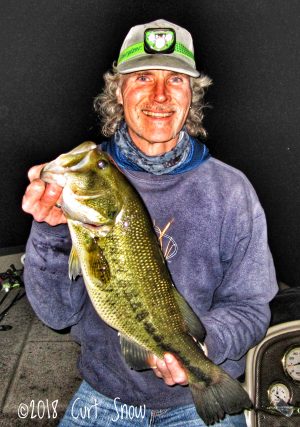

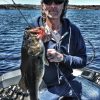

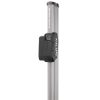

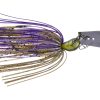

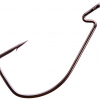
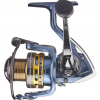
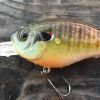
There are no comments yet, add one below.